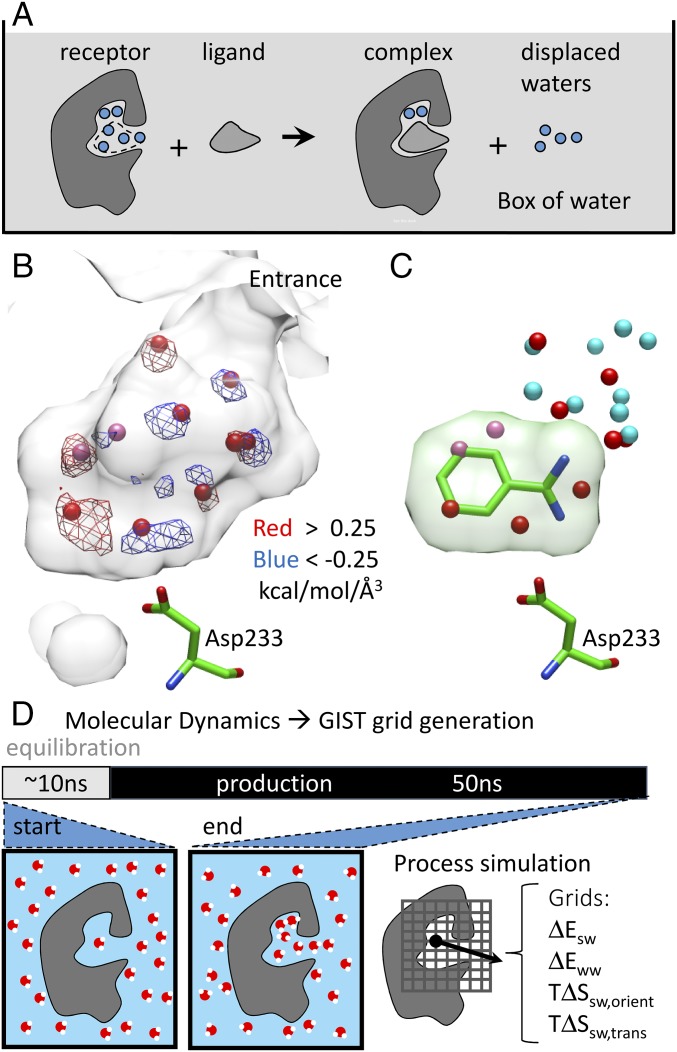Fig. 1.
Receptor desolvation in the CcP-gateless cavity using grid-based inhomogeneous solvation theory. (A) Upon ligand binding, ordered water can be displaced, remain unaffected, or bridge between ligand and protein. (B) The CcP-gateless apo cavity (transparent surface) is filled with nine crystallographic water molecules (red spheres; pink spheres indicate half-occupancy) (PDB ID code 4NVA) and compared with GIST enthalpy grid maps representing unfavorable water positions (red mesh; >0.25 kcal⋅mol−1⋅Å−3) and favorable water positions (blue mesh; <−0.25 kcal⋅mol−1⋅Å−3). (C) Ligand benzamidine (PDB ID code 4NVC) displaces four apo-cavity waters (red spheres) and reorders several of the remaining waters (cyan spheres) about the ligand. (D) The GIST grids are calculated by postprocessing a molecular dynamics simulation of a restrained apo protein in a box of water.

